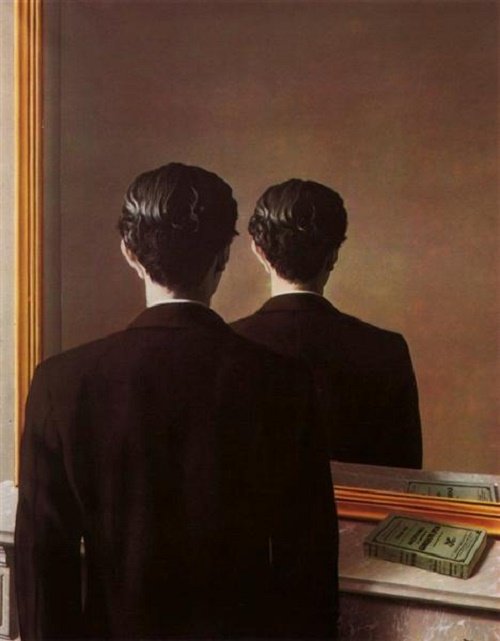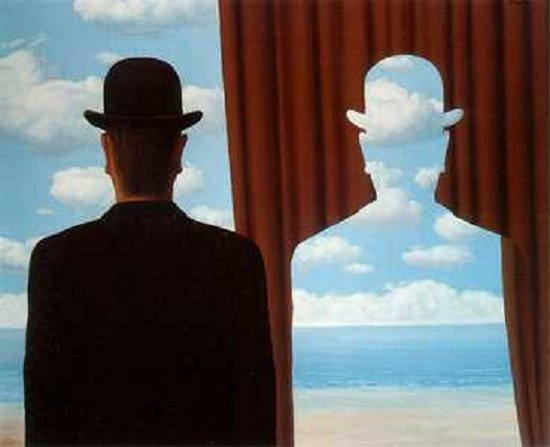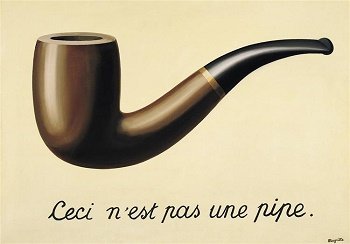René Magritte, el pintor belga fallecido el 15 de agosto de 1967, es, indiscutiblemente, uno de los artistas que grabó la pintura del siglo XX, tocando incluso ribetes filosóficos; recordemos el libro del filósofo Michel Foucault escrito a partir de una de las obras de Magritte: ”Esto no es una pipa”, de título homónimo.
Es uno de mis pintores favoritos, al que siempre vuelvo. Aquí mi modesto homenaje por medio de un brevísimo ensayo.
============
René Magritte, the Belgian painter who died on August 15, 1967, is, indisputably, one of the artists who recorded the painting of the twentieth century, even touching philosophical edges; remember the book of the philosopher Michel Foucault written from one of Magritte's works: “This is not a pipe “, of the same title.
He is one of my favorite painters, to whom I always come back. Here is my modest homage by means of a very short essay.

Imaginar la “incurable otredad que padece lo uno”, en pensamiento de Antonio Machado. Pintarla como quien reconoce su propia heterogeneidad en la diferencia, en la doblez, en la realidad siempre otra. Recrear la incierta e inasible presencia de lo que somos, de lo que nos constituye en pensamientos, deseos, sueños (generalmente, pesadillas).
Como en el aforismo poético de Rafael Cadenas: “En el espejo donde te miras, no hay nadie”, ironiza sobre la unicidad inmutable y engañosa de la apariencia. Con un humor sobrio y caustico, revela lo ignoto de lo que nos rodea o propone su transformación en una imagen que se eleva y multiplica ante nuestros ojos cansados de realismo.
Magritte nos devuelve a la esencia de lo humano y del mundo, que es diversa y heteróclita. Por su pintura, volvemos a ser la ambigüedad que hemos perdido.

To imagine the “incurable otherness that suffers the one”, as Antonio Machado thought. To paint it as one who recognizes his own heterogeneity in the difference, in the doubleness, in the always other reality. To recreate the uncertain and elusive presence of what we are, of what constitutes us in thoughts, desires, dreams (generally, nightmares).
As in the poetic aphorism of Rafael Cadenas: “In the mirror where you look at yourself, there is no one”, he ironizes on the immutable and deceptive uniqueness of appearance. With a sober and caustic humor, he reveals the unknown of what surrounds us or proposes its transformation into an image that rises and multiplies before our eyes tired of realism.
Magritte brings us back to the essence of the human and the world, which is diverse and heteroclite. Through his painting, we become again the ambiguity we have lost.


Gracias por su lectura | Thank you for reading.



The rewards earned on this comment will go directly to the people( @josemalavem ) sharing the post on Twitter as long as they are registered with @poshtoken. Sign up at https://hiveposh.com.
Magritte es uno de los pintores más filosóficos entre los grandes artistas del siglo XX. Tiene espléndidas obras maestras, pero mi favorita es Le faux miroir, el cual se encuentra en el MOMA de Nueva York.
Las micro ficciones y micro ensayos, que regularmente publicas son una interesante manera de “especular” y tratar un tema o personaje.
Gracias por tu comentario, @nenio. Sí, señalé el carácter marcadamente filosófico de la obra de Magritte; que Foucault, uno de los más relevantes filósofos del siglo XX, le dedique un libro completo es muy indicativo (por cierto, en él también refiere a Klee y Kandinski). Esa pintura de Magritte que refieres también la aprecio mucho. Saludos.